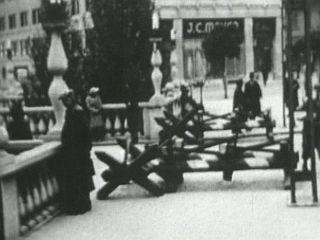
In the depths of World War II, an unknown hero defied the Fascist occupation authorities – and gave hope to thousands.
Nineteen forty-three was one of the darkest years in Slovenian history. Just two years previously, the Slovenian Lands had been occupied by the Axis powers, who divided up the conquered territory between them. At the beginning of the war, the Slovenian Resistance had fled to the forests, from where they waged a guerilla war against the occupiers. Ljubljana, the Slovenian capital, was surrounded in barbed wire and subject to random acts of terror by the Italians, but members of the resistance continued to be active even in the city itself.
On the night of April 11, 1943, the second anniversary of the Italian occupation, one person decided to send the Italians an unambiguous message of defiance. Under the cloak of the dark spring night, he climbed to the top of the Franciscan Church in Ljubljana and hoisted the Slovenian national flag – which had been illegal since the beginning of the war – on the belfry.
Word of the daring act quickly spread across Ljubljana. The Italian troops were so furious that they fired their guns at the flag, but their bullets couldn’t bring it down. Finally, they found a local man who took down the flag for a hefty payment.
The Italian authorities arrested five Franciscan friars and accused them of allowing the flag to be hoisted on their church. They were eventually released, but several were rearrested when the Germans took over the Slovenian capital several months later.
After the war, the man who was paid to take down the flag was executed for torturing Slovenian prisoners at the behest of the Italians. Meanwhile, the hoisting of the Slovenian flag became a legend. Several theories about the perpetrator of the act were put forward, but the identity of the man who decide to send a powerful message of freedom and perseverance on that spring night was destined to remain a mystery.
Jaka Bartolj

































































